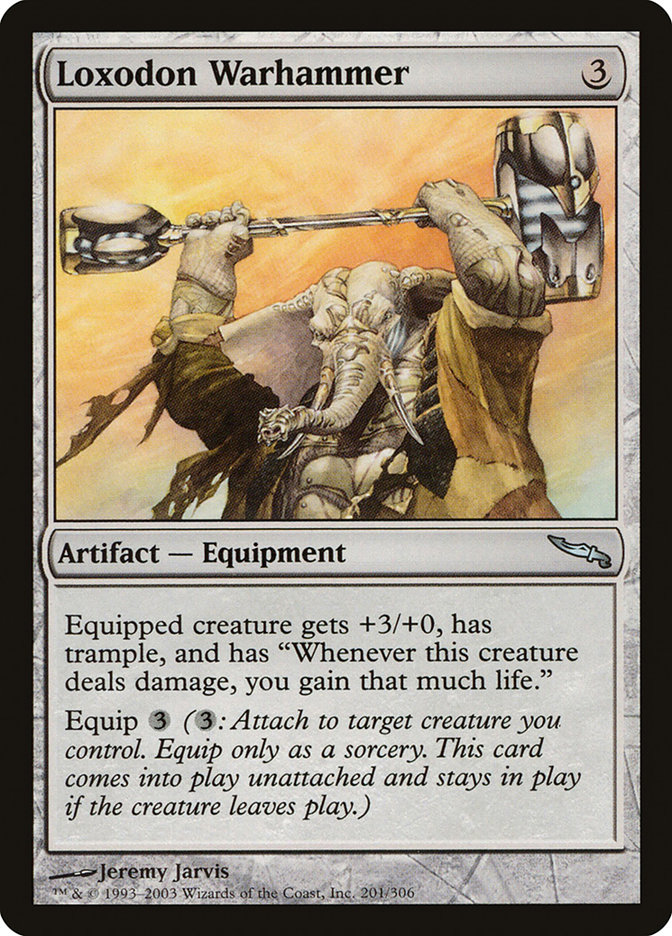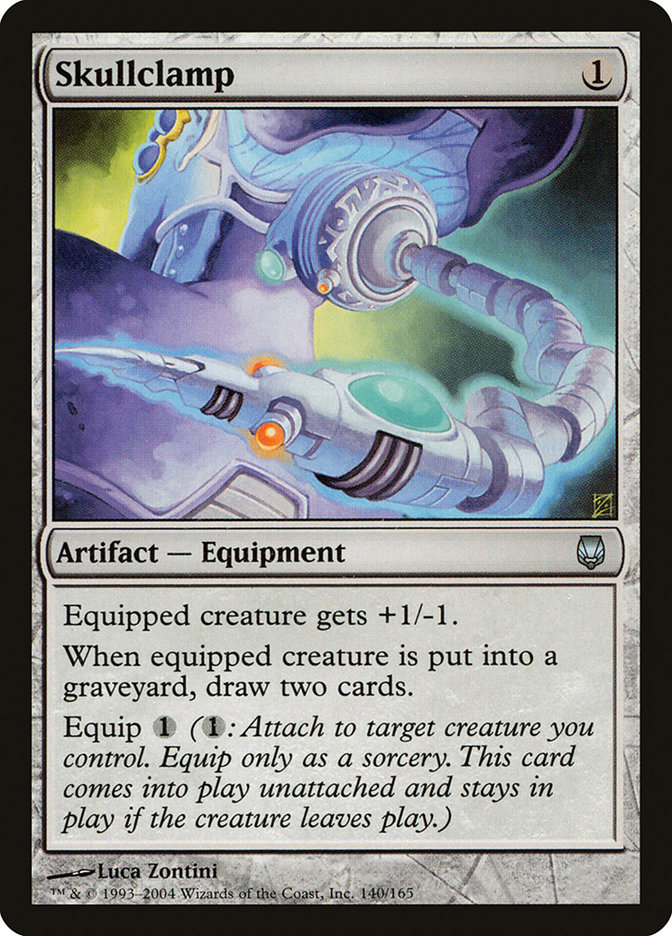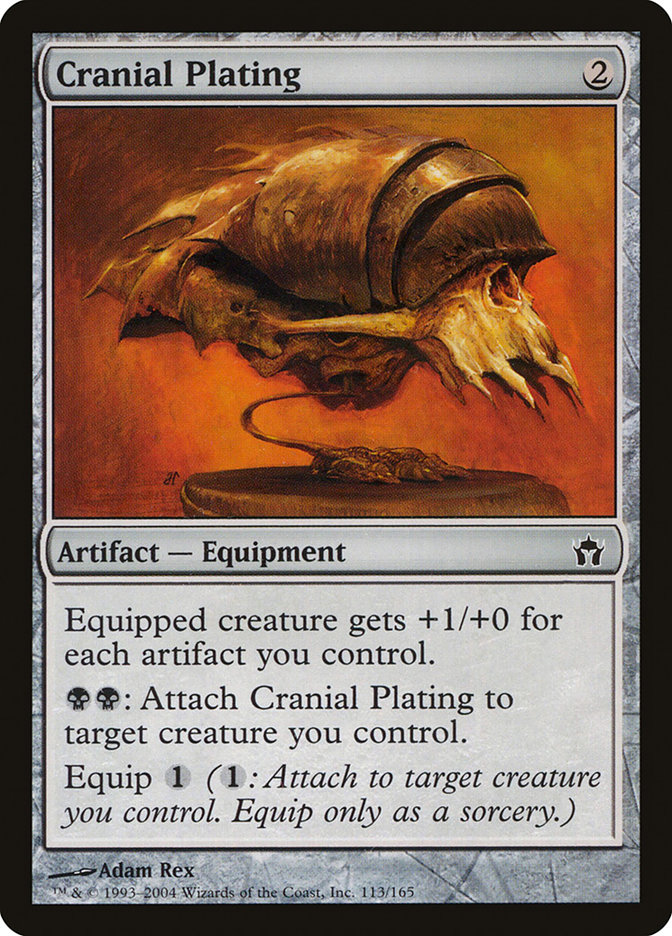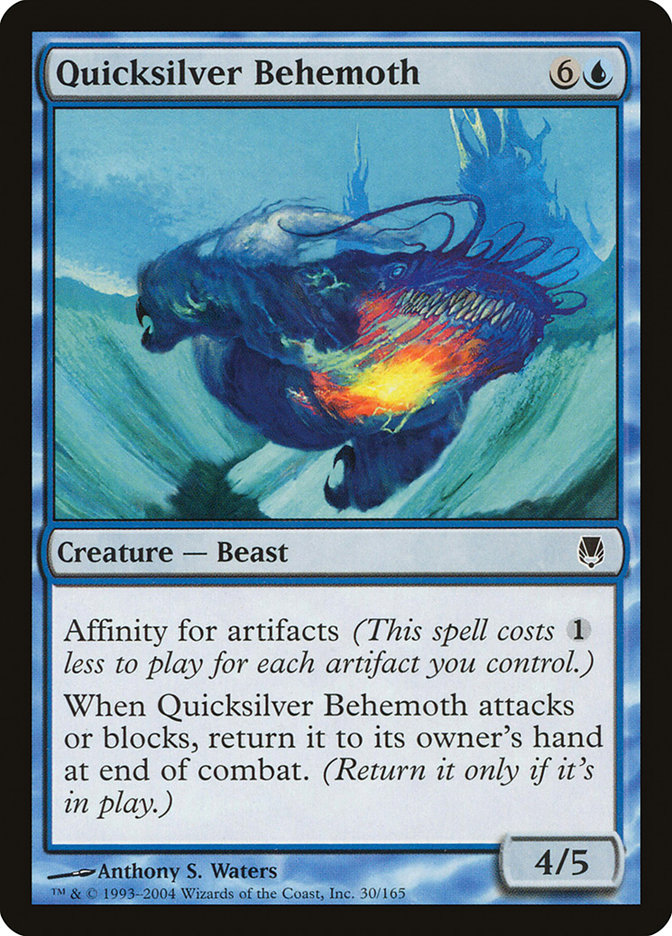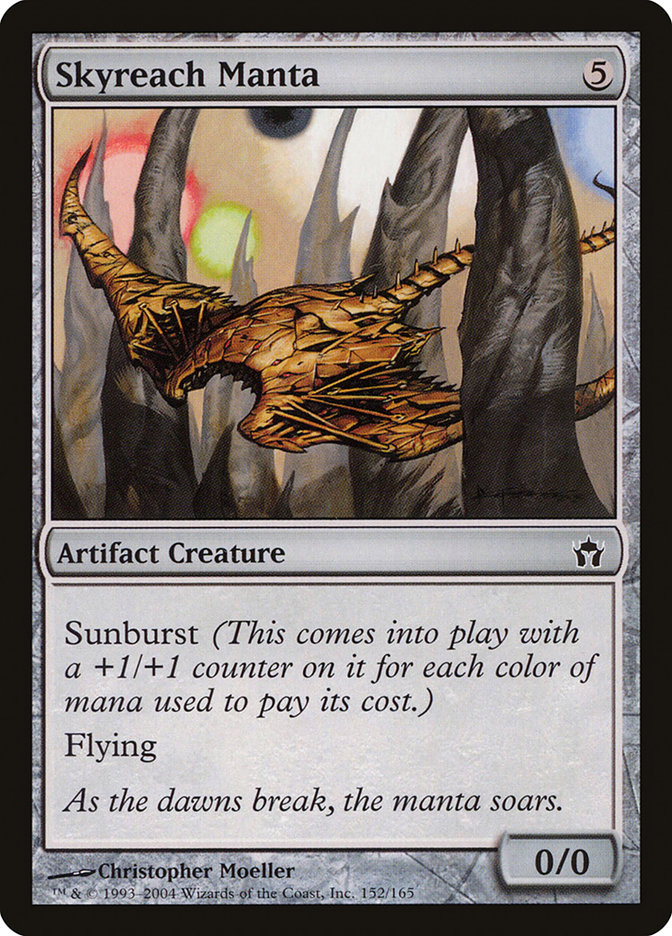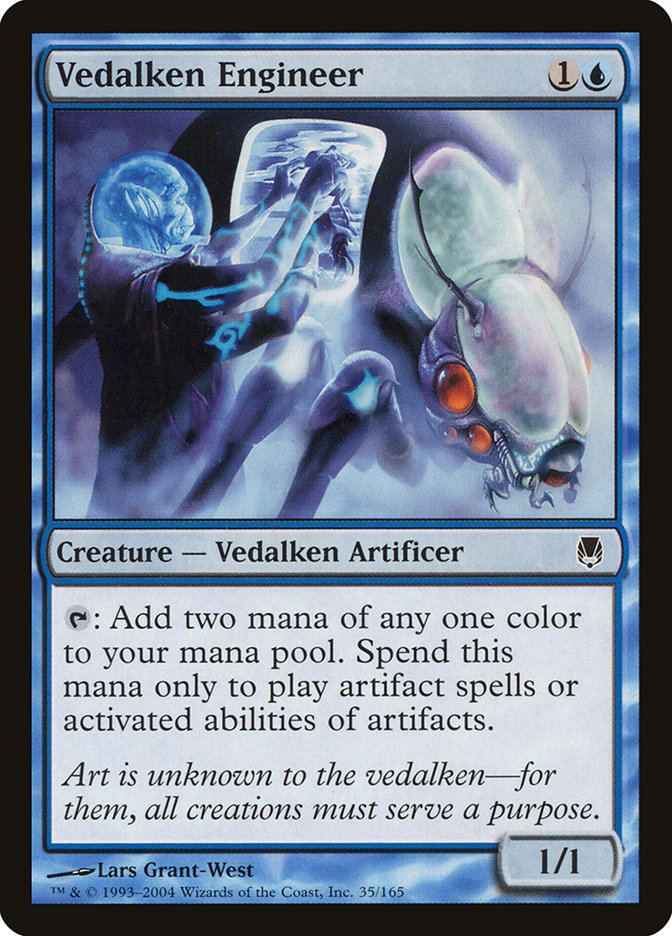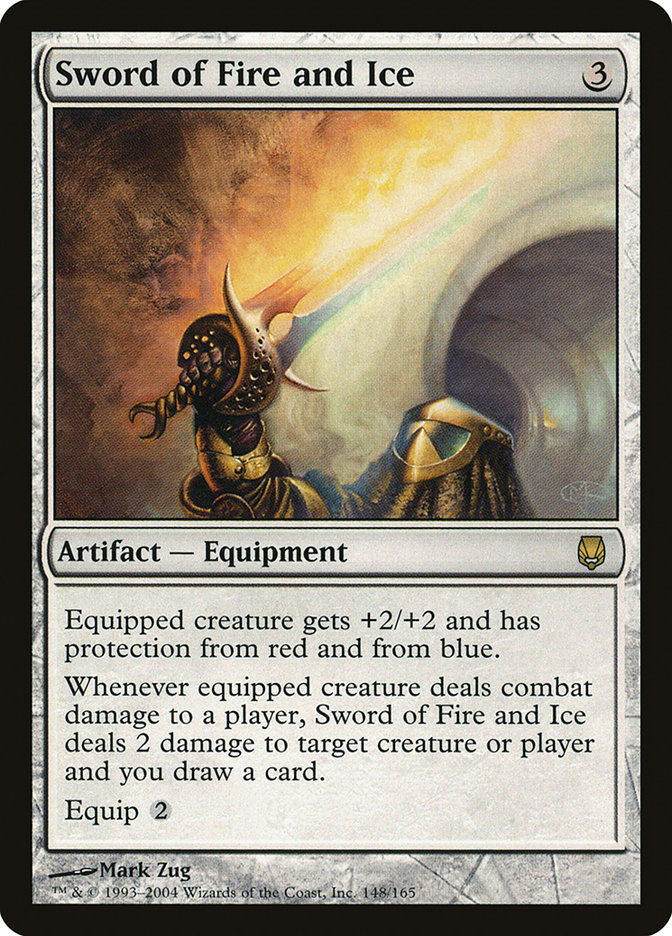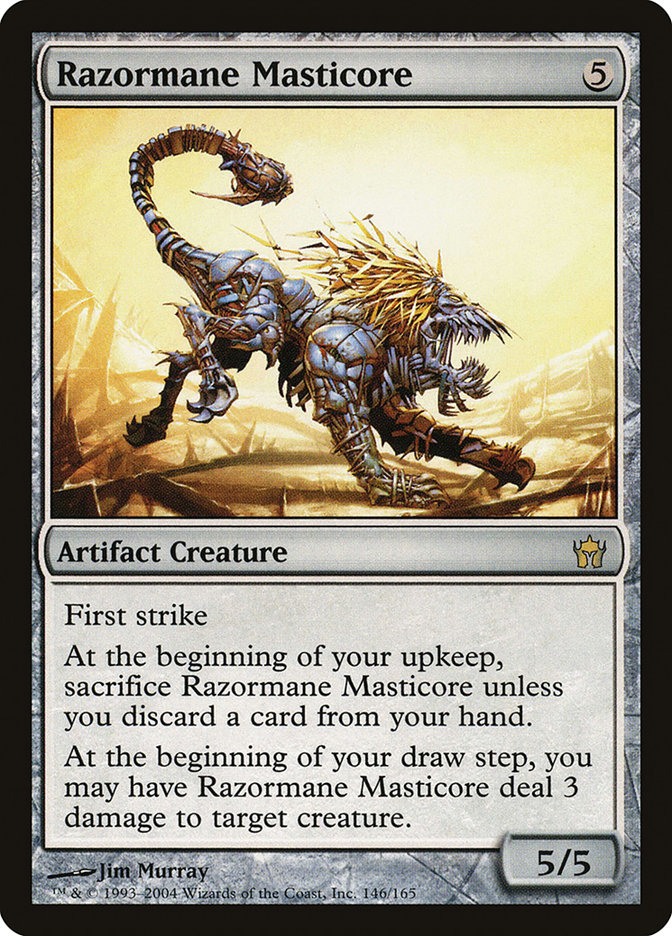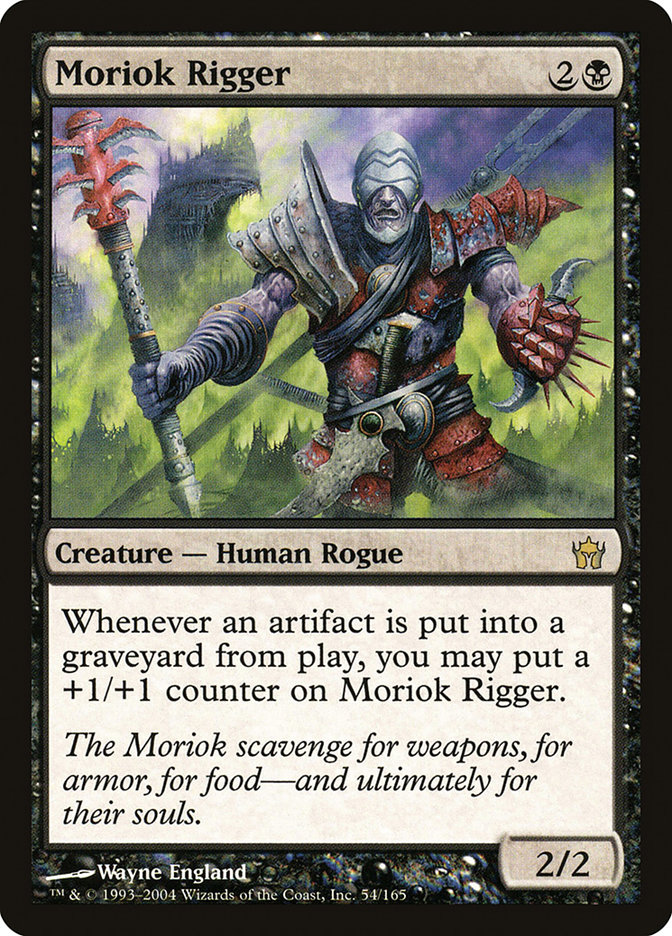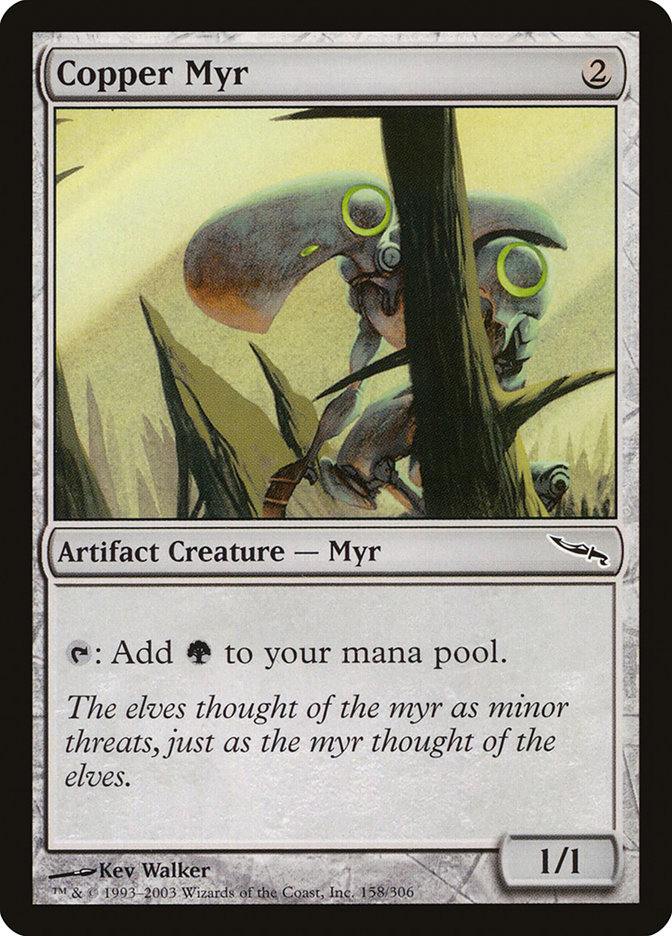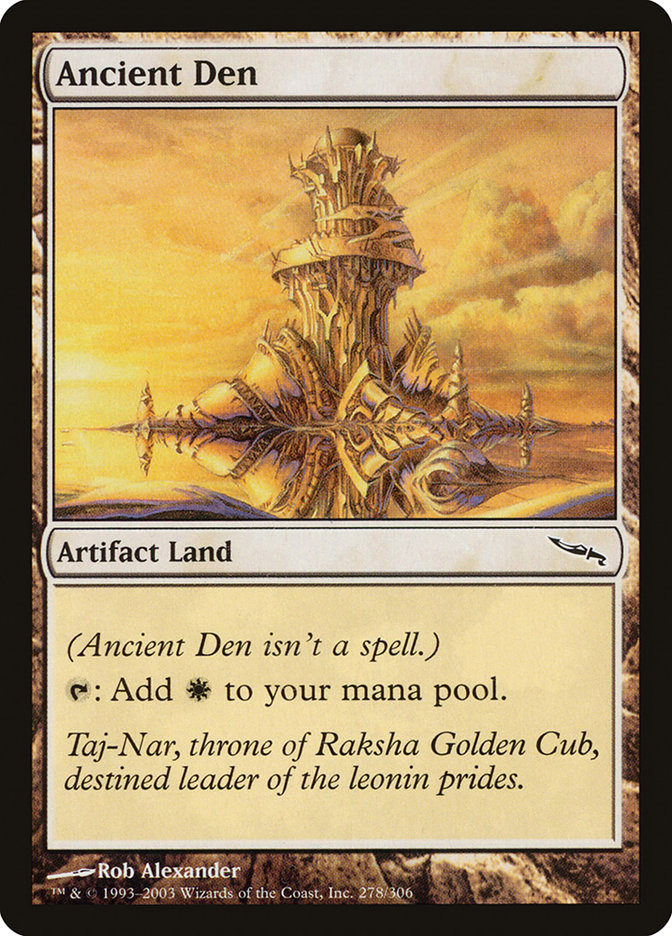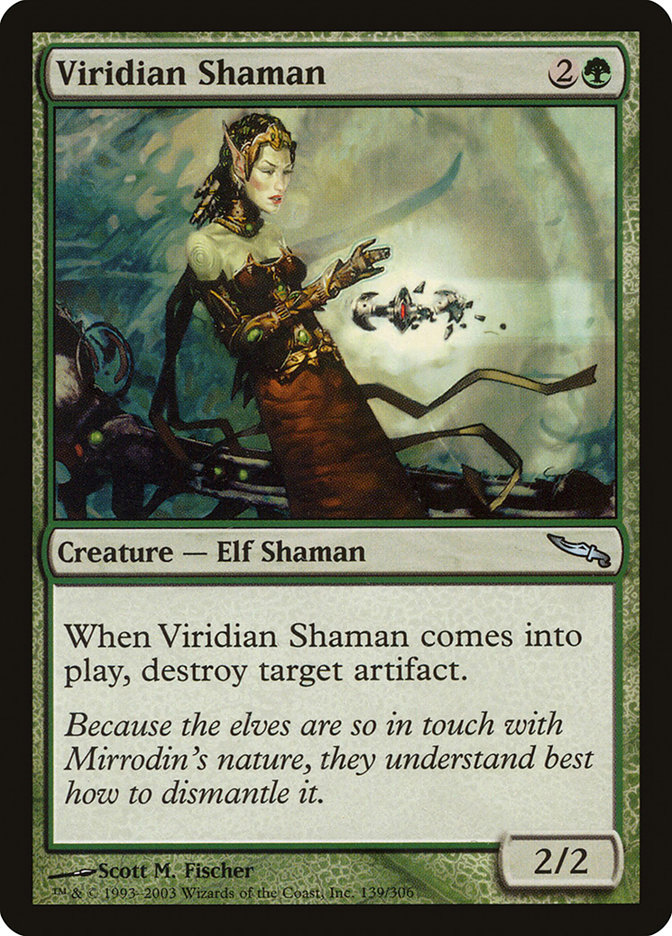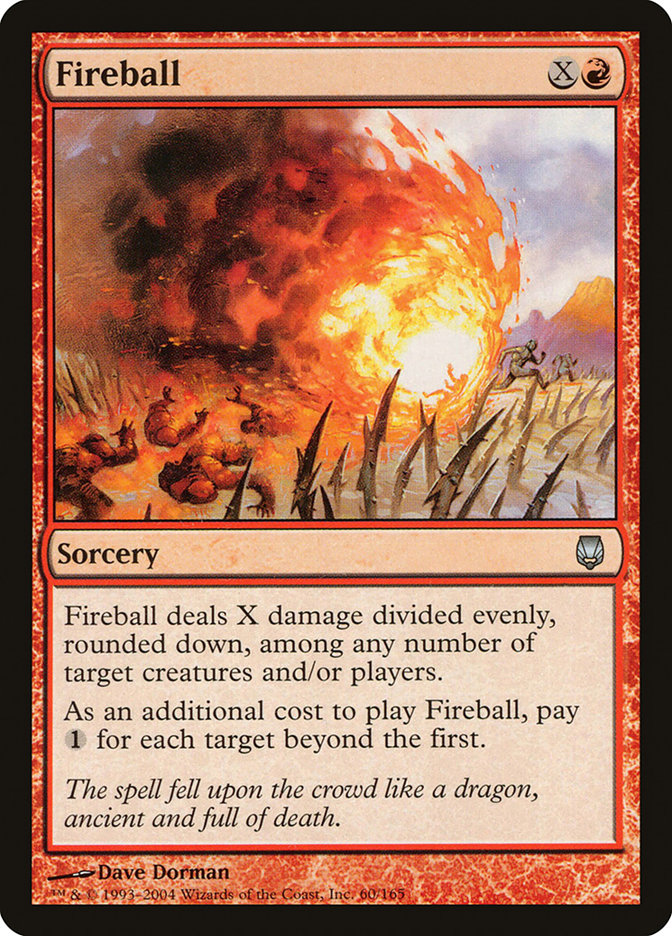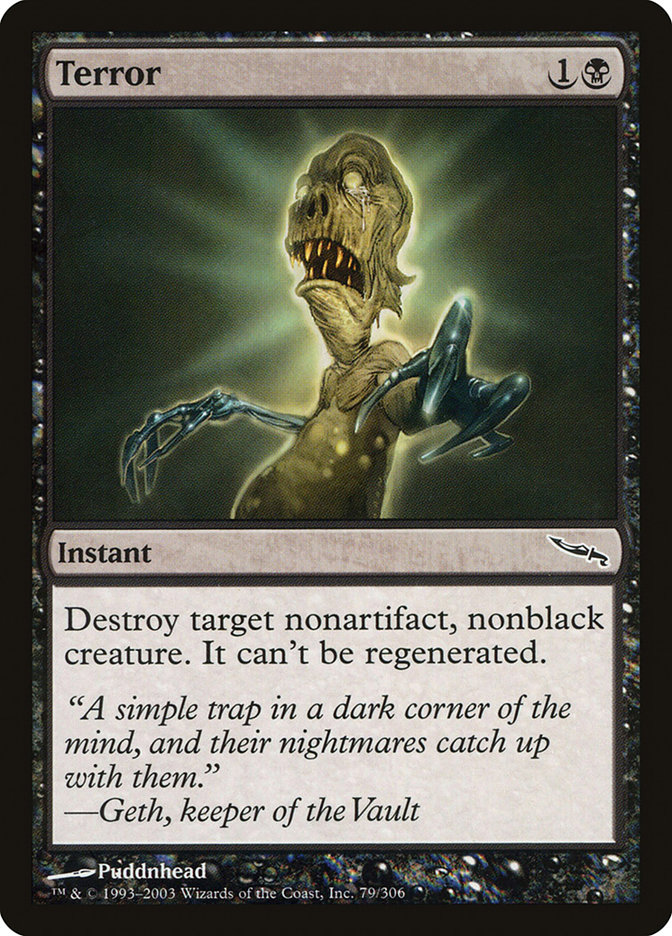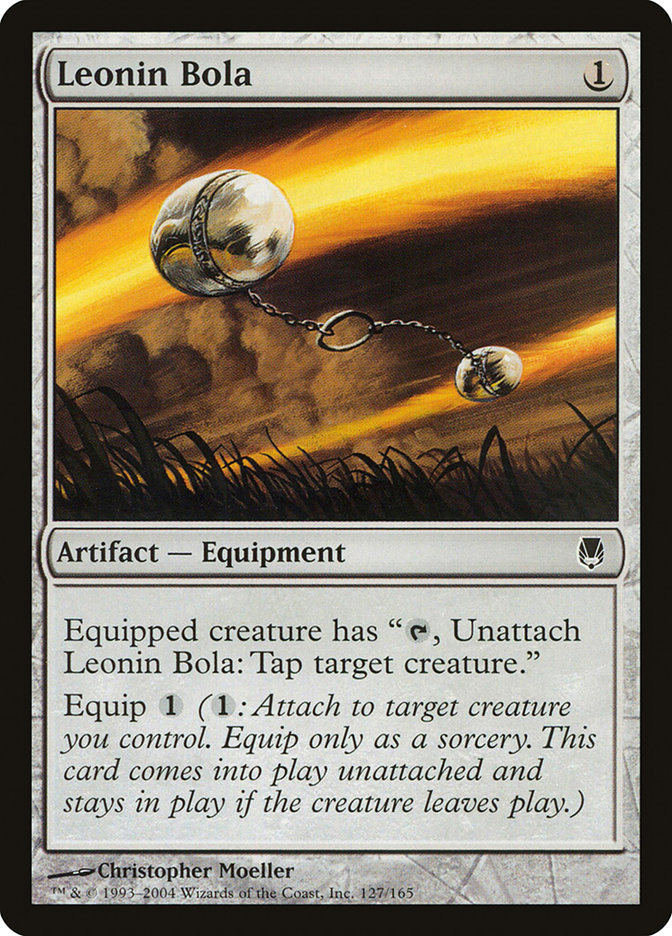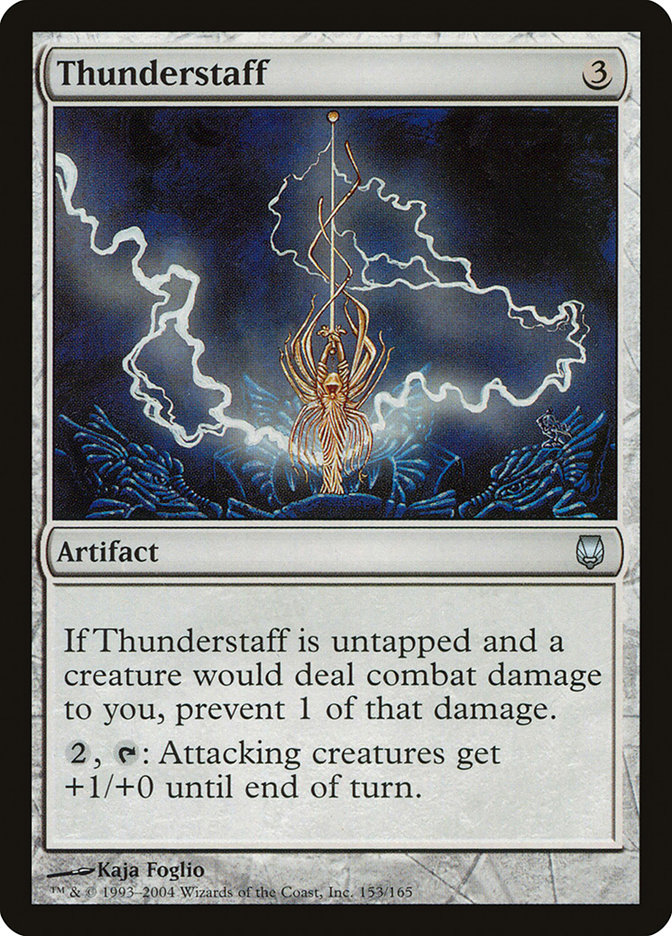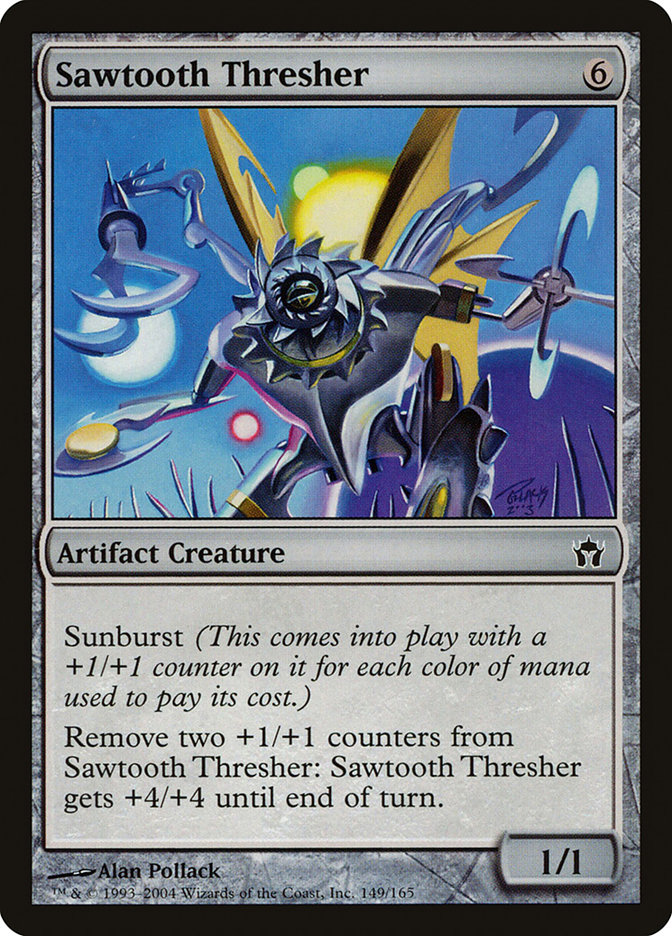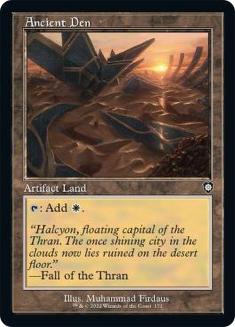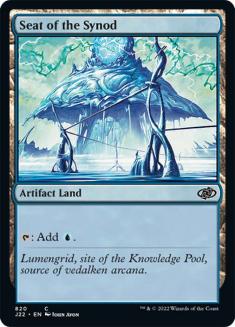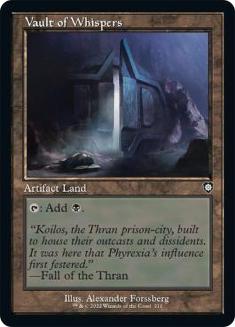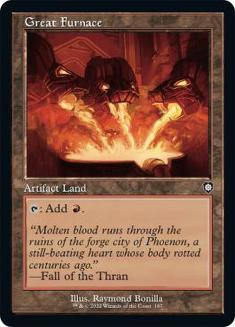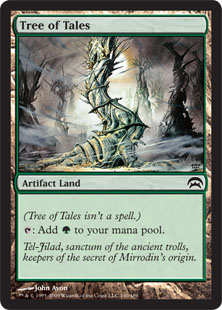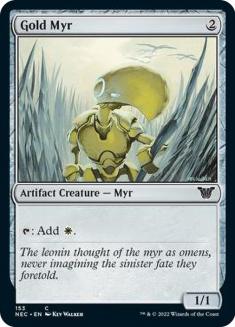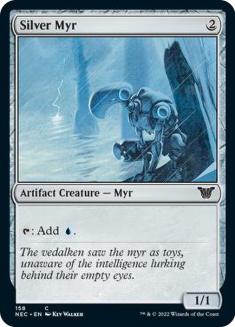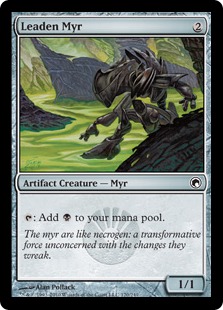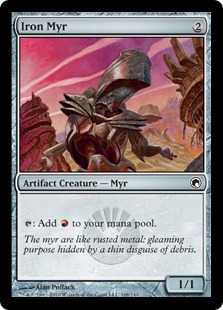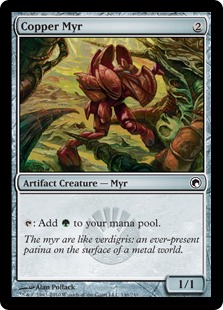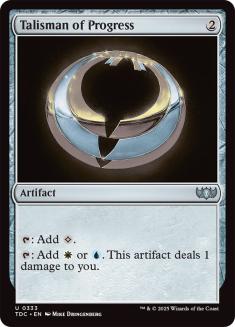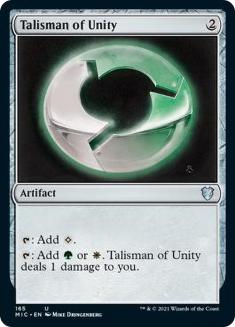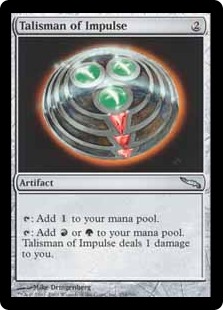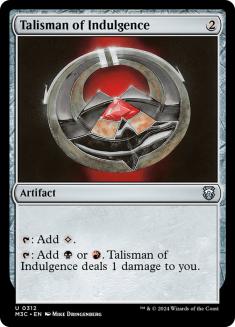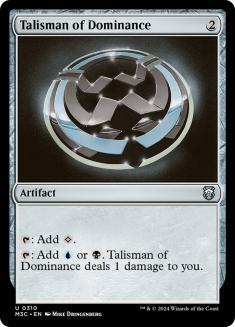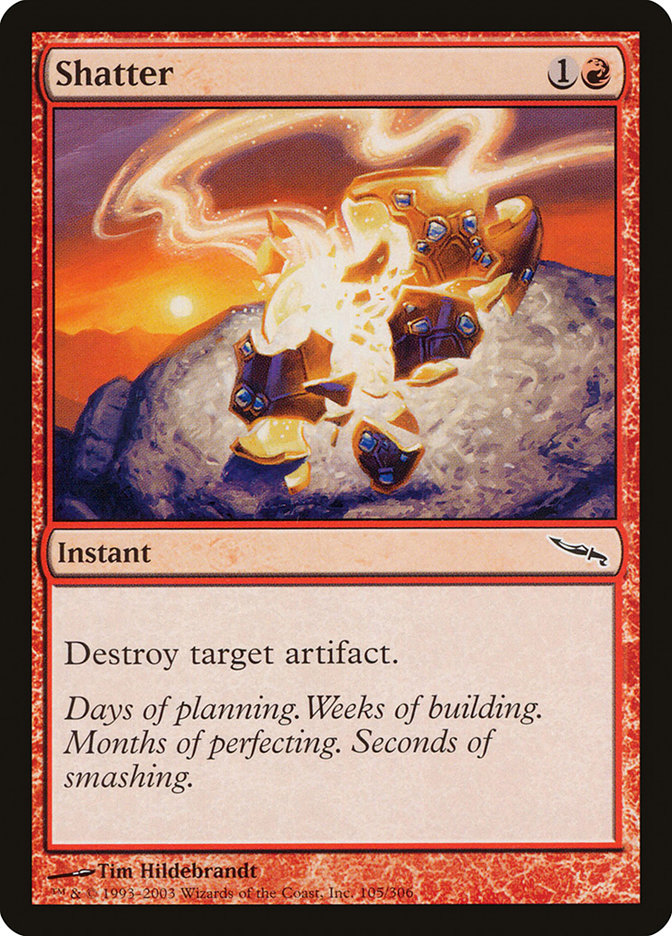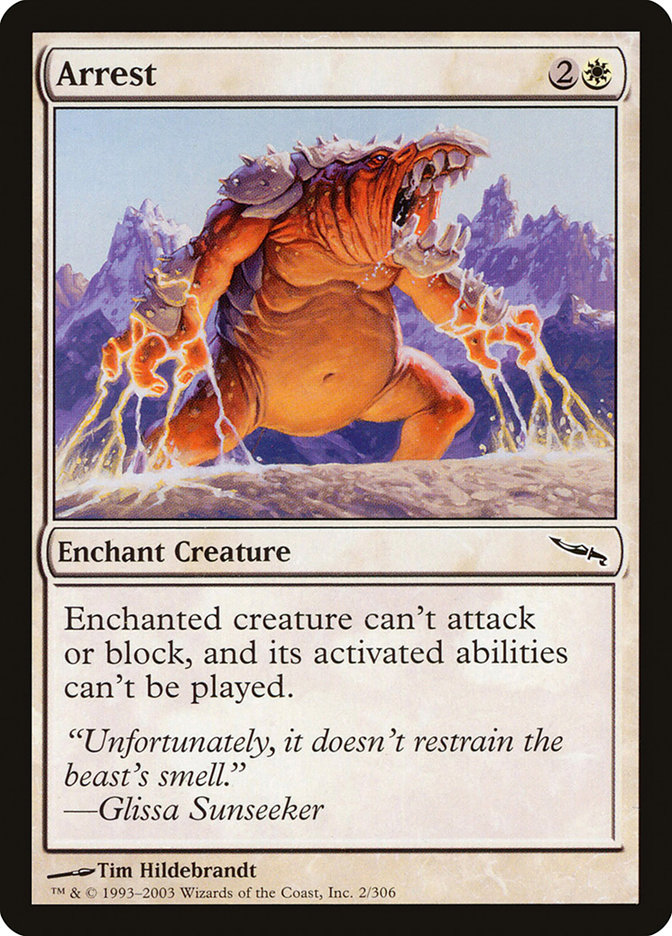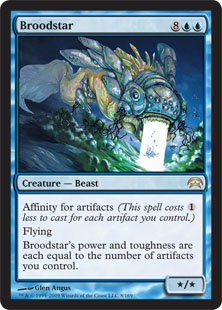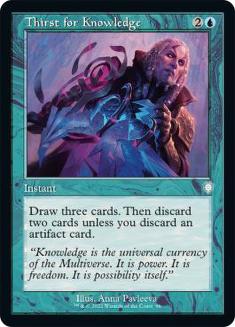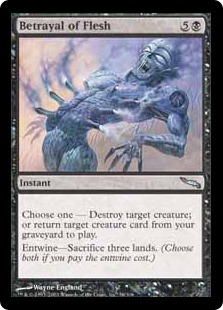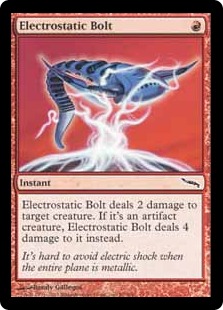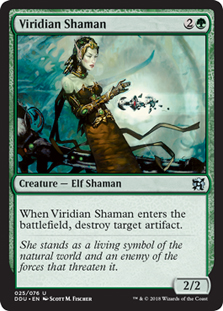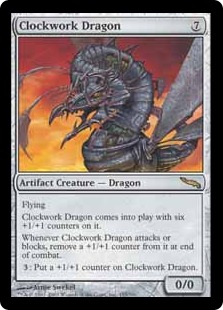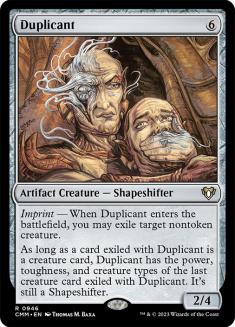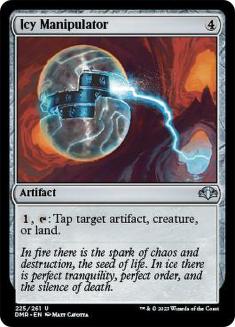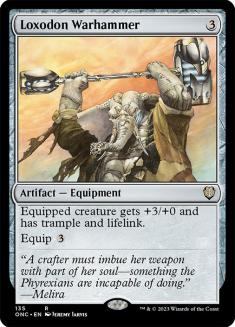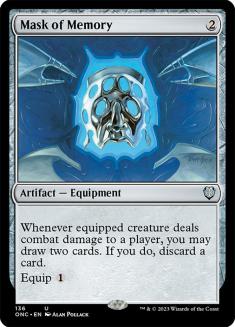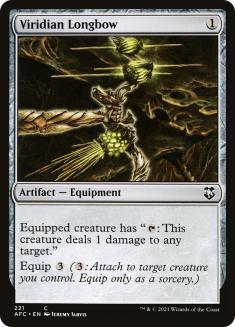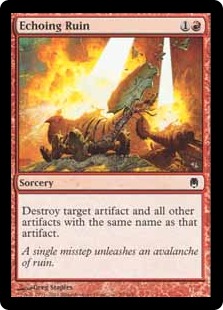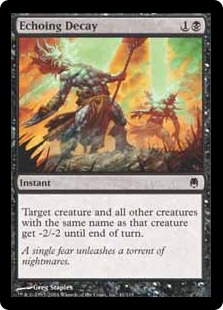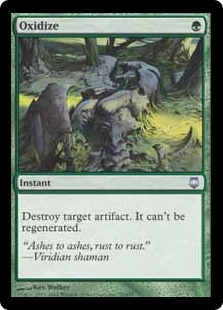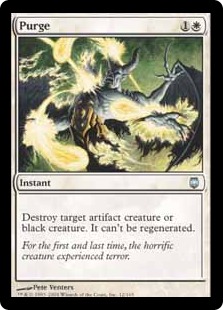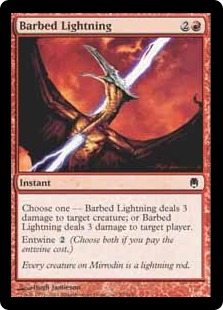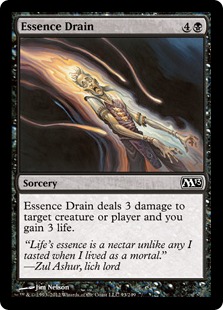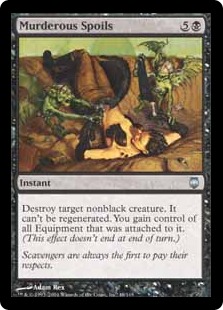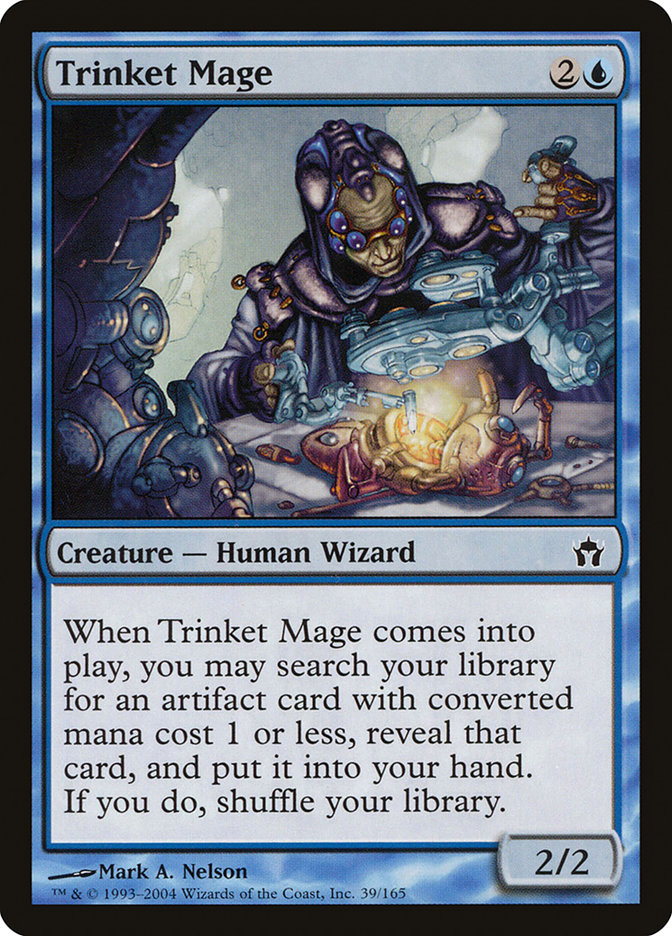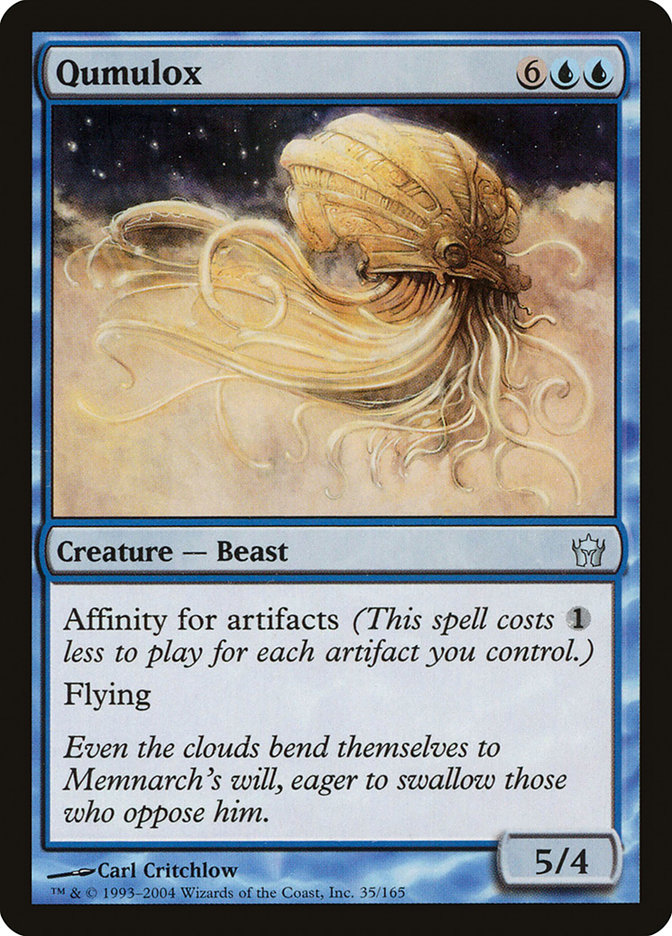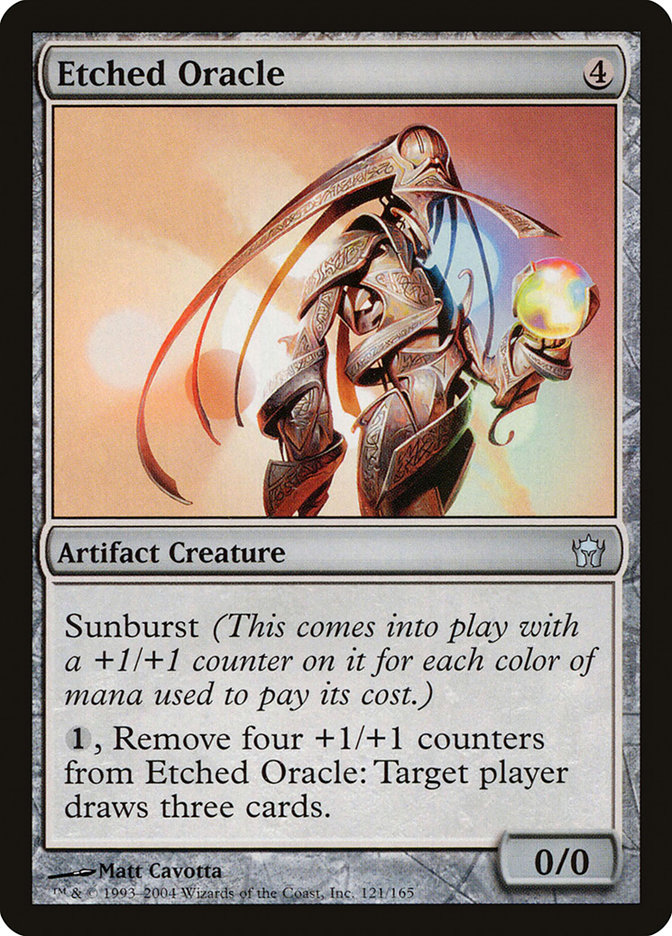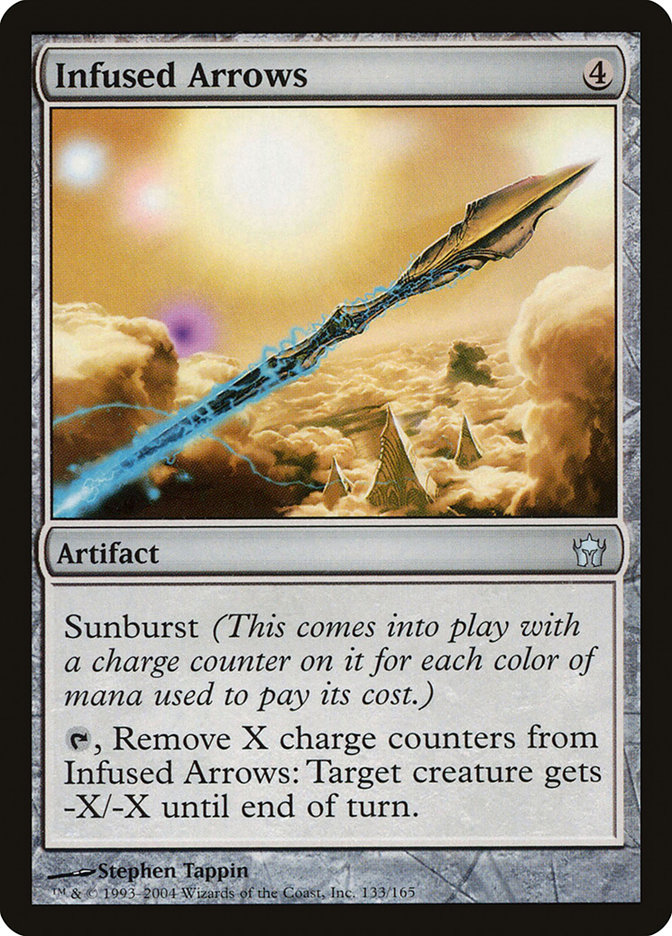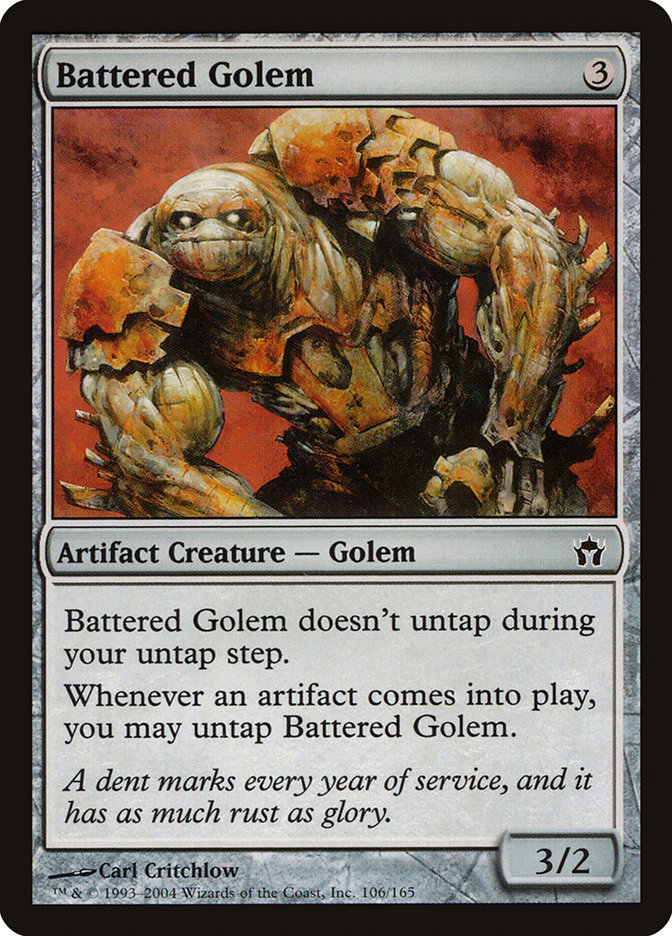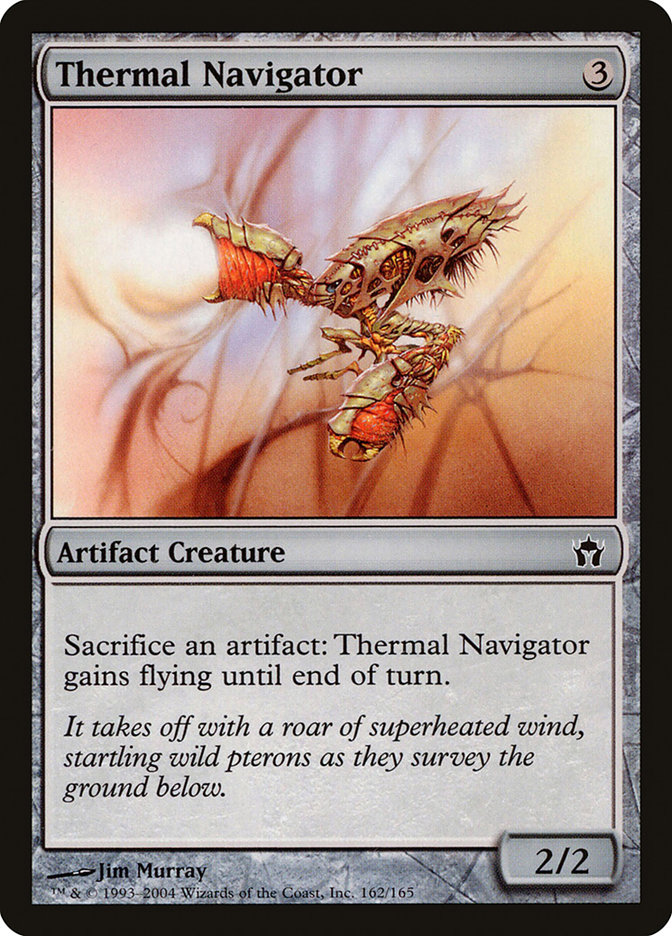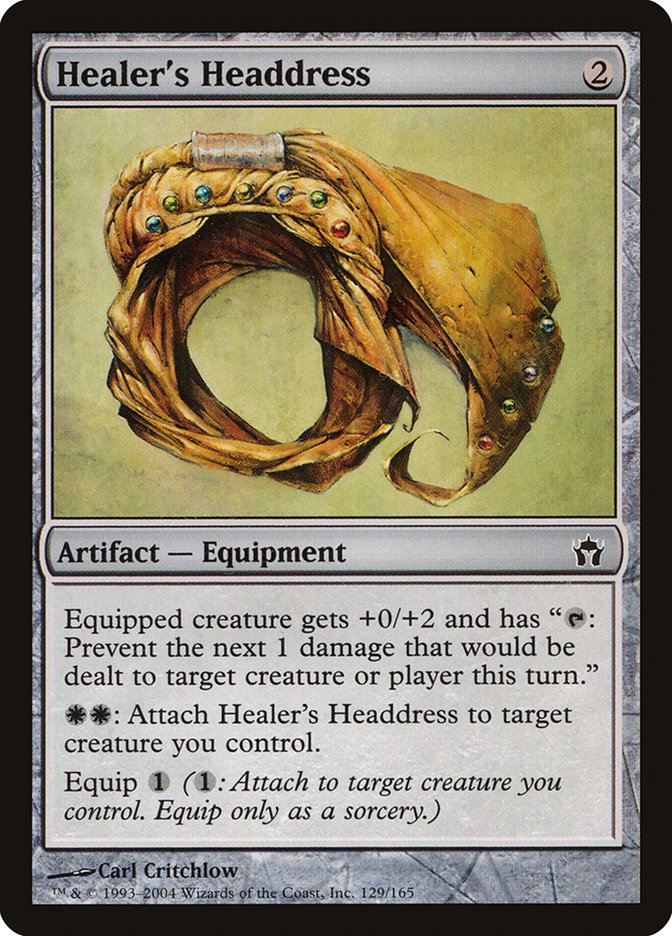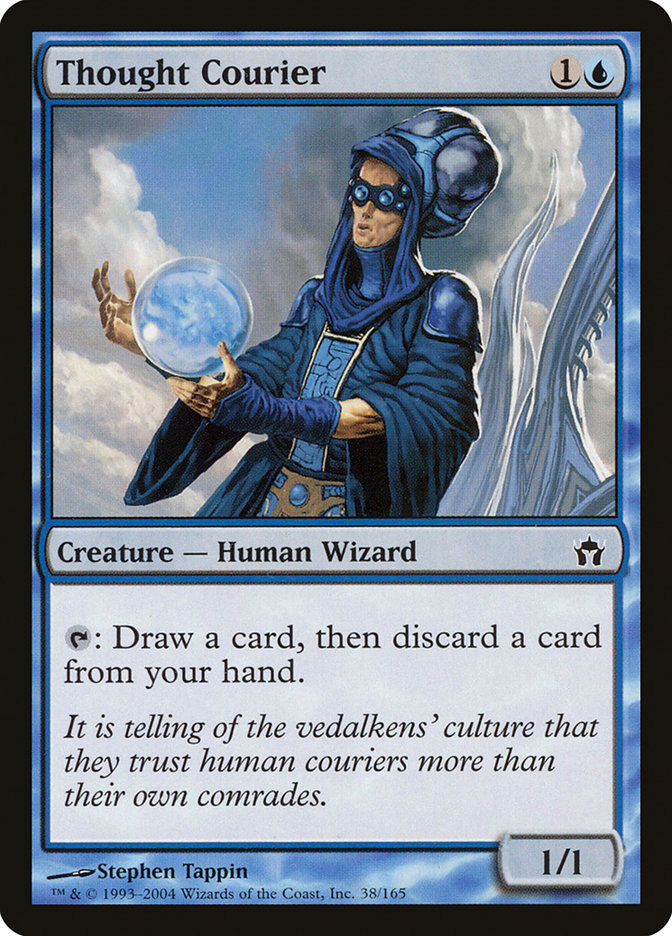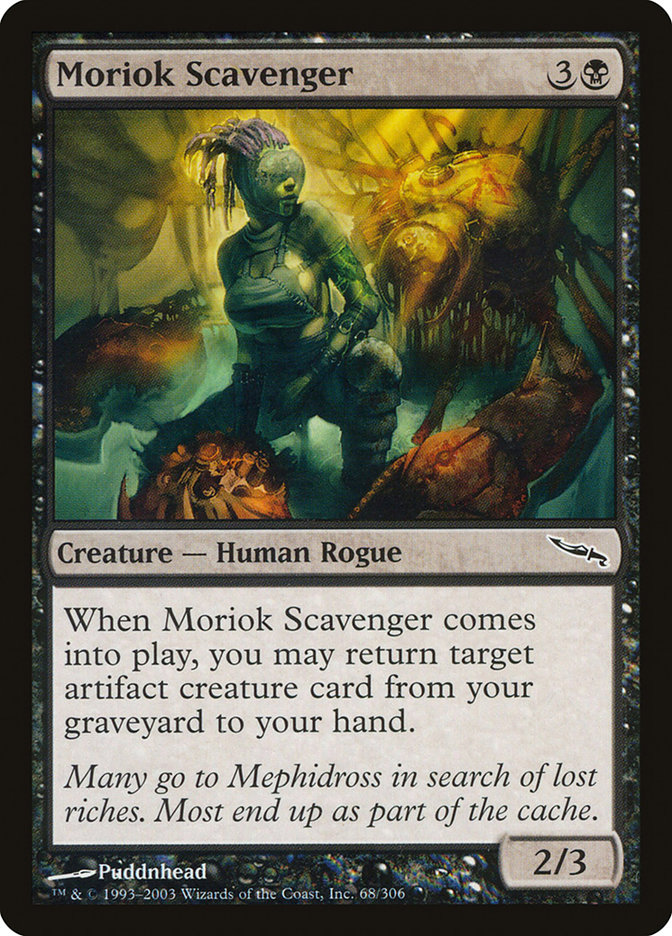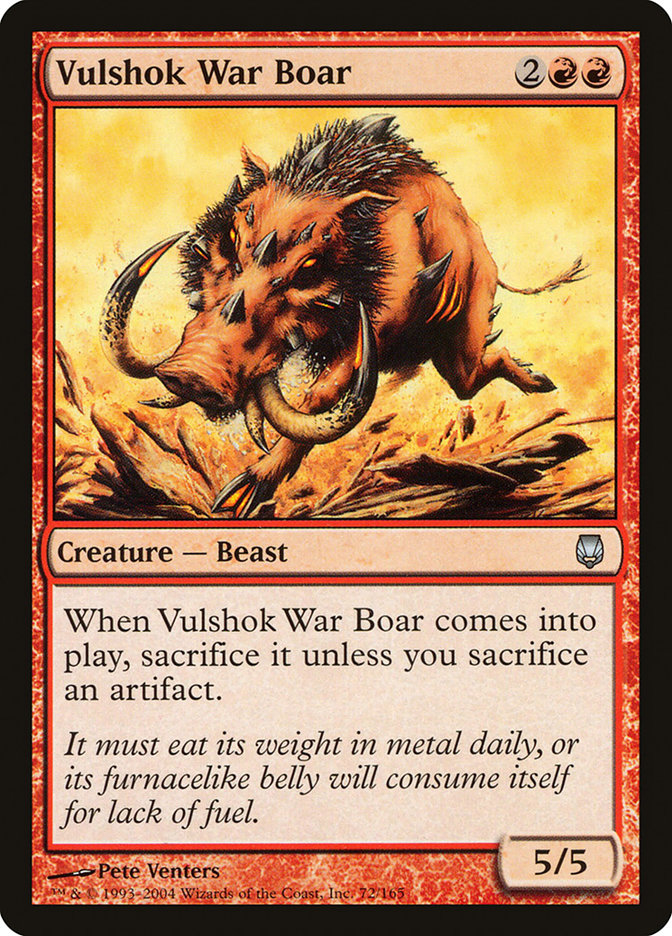The year is 2004.
The average cost of a gallon of gas is $2.10.
George W. Bush is the president of the United States of America.
Somehow, someway, the Yankees manage to blow the first 3-0 lead in Major League Baseball playoff history.
Tom Brady and the Patriots defeat the Carolina Panthers in a very close game to win Super Bowl XXXVIII. (Some things never change.)
The Tampa Bay Lightning win their first ever Stanley Cup, defeating the Calgary Flames in seven games.
It’s almost impossible to go to the movie theater and avoid sequels, as Spider-Man 2, Shrek 2, Kill Bill: Volume 2, and Harry Potter and the Prisoner of Azkaban headline a fairly mediocre year in cinema. (Let’s be real. You didn’t see Eternal Sunshine of the Spotless Mind in theaters. You saw it on DVD a few years later.)
The Magic Pro Tour has a very eventful year, as Masashiro Kurdoa is the first Japanese player to win a Pro Tour, Nicolai Herzog wins two Pro Tours, and Julien Nuijten becomes the youngest player to ever win a Pro Tour at 15 years old.
Magic Online works (kinda), and it looks like this:
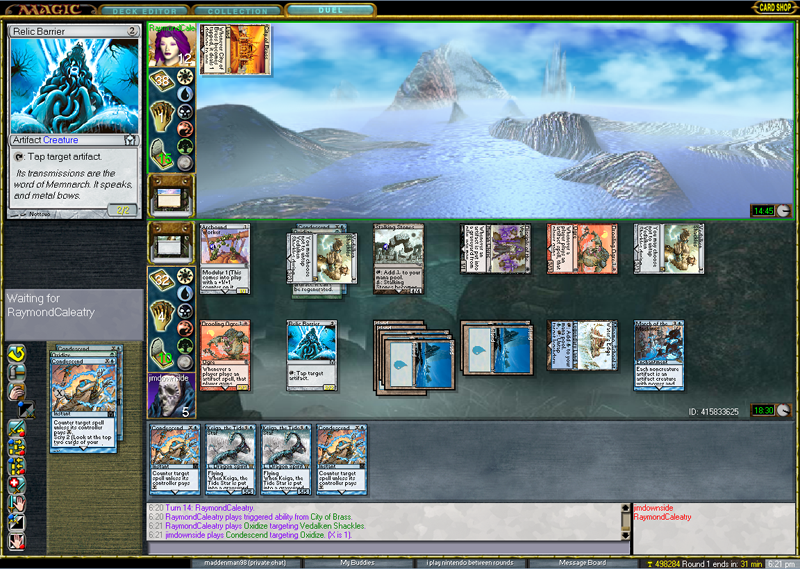
But while all of this stuff is great, 2004 will be remembered for one major thing: Mirrodin / Darksteel / Fifth Dawn Draft.
Mirrodin / Darksteel / Fifth Dawn Draft has it all. The power level is sky-high, there are a number of different types of decks you can draft, the games are very interactive, and most importantly, each set has its own unique feel while still feeling like part of a greater whole. Mirrodin / Darksteel / Fifth Dawn Draft was very different from Mirrodin / Mirrodin / Darksteel Draft, which was very different from triple Mirrodin Draft.
So, while all of this is very interesting… what does it have to do with living in present-day 2016?
Well, my friend, for one week only (starting yesterday) you can draft MD5 as many times as you would like on Magic Online, thanks to their “Year of Modern Flashback Drafts” promotion!
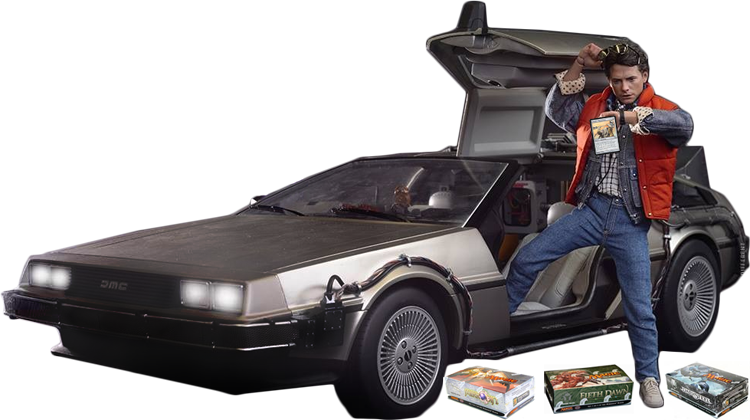
“Great Scott, is that a Loxodon Warhammer?!”
Not only do you get to play one of the most enjoyable draft formats ever for a week, but even better is that you have me here to guide you!
I drafted MD5 about nine million times back in the day, and in almost every draft I would force my signature deck – Mono-Blue Sunburst Affinity. The deck is a product of the format, as in each pack you have a very specific plan for what you want to do. It is odd, and often you go into the third pack with only one or two ways to actually win in your deck, but the payoff is huge because of how powerful the deck is. The deck is all about synergy, and you will be making some picks that feel very strange.
Creatures (14)
- 1 Trinket Mage
- 1 Suntouched Myr
- 1 Skyreach Manta
- 1 Sawtooth Thresher
- 1 Lunar Avenger
- 1 Battered Golem
- 2 Vedalken Engineer
- 2 Quicksilver Behemoth
- 1 Arcbound Crusher
- 1 Silver Myr
- 1 Iron Myr
- 1 Copper Myr
Lands (16)
Spells (10)

This is about what you want your deck to look like. This particular deck has no rares or bomb uncommons like Fireball or Skullclamp in it but is still very good. When you add on the fact that you can play almost any busted card you open, it’s easy to see why this deck is so effective.
This deck has 22 artifacts in it (counting Trinket Mage because it gets you one), and you want to have a baseline of at least 50% of your deck being artifacts. If you fall too far below this threshold your cards stop working well together and the deck can fall apart.
Let’s break the deck down into its major components:
Bombs
While not necessary for the deck to function, one of the biggest draws to the deck is that you can play almost any bomb you open.
Very often these bombs are going to fall into the other categories, be they big removal spells like Fireball, threats like Razormane Masticore, or “junk” like Sword of Fire and Ice. Bombs and the top tier removal spells are the only things you are going to be taking over mana.
Mana
Mana is by far the most important part of the deck. You don’t end up with four or five artifact lands and a handful of Myrs without taking them very aggressively, and that is exactly what we plan to do. One or two artifact lands are fine in most decks, but once you reach a critical mass of artifact-based mana you get to do really stupid things.
All of the artifact mana does wonders for your affinity cards and other artifact synergy cards, but it also has the great side effect of putting a bunch of random colors into your deck as well. While these extra off-color sources aren’t always enough to splash, they are more than enough to power up all of the sunburst cards that very few players are going to want. Oddly enough, this means you should prioritize off-color artifact lands and myrs if possible.
Vedalken Engineer also deserves special mention, as he is basically the poster child for the archtype. Vedalken Engineer is a fine but awkward card that not all decks want, but is the card we want more than anything and the major reason we are base blue.
Removal
You aren’t going to want a ton of removal in the deck, as it dilutes the artifact synergies, but you get to play the best of the best.
Most removal spells you open are going to be fair game for you to cast, and because of this you can basically have the pick of the litter. You can pass on second-tier removal spells like Rain of Rust and Irradiate, because when you are spread over all five colors, it’s not hard to find better options.
Again removal is not that important to our core strategy, but getting to play the best of the best is a huge draw. Because there is so much removal in all three sets and we don’t need that much of it, removal is a lower priority than mana except for the very best removal spells.
“Junk”
You are going to get a lot of artifacts into play, and not all of them need to be spectacular.
Equipment is the best kind of junk, as cards like Leonin Bola and Viridian Longbow offer powerful effects over the course of a game, work fantastically with your mana Myrs, and are cheap artifacts you can get into play quickly in the early game to get you going. Top-flight equipment like Cranial Plating should never be passed, but even something a simple as Horned Helm does the trick nicely. Utility cards like Icy Manipulator and Thunderstaff work great as well.
You need to be putting artifacts in play in the early game, and the better they are the better your deck will be.
Threats
Interestingly enough, while your deck will be producing some of the best threats in the format, you will be getting most of them as late picks.
You are certainly interested in cards like Myr Enforcer and Synod Centurion that other artifact decks are going to want, but our true bread and butter comes in the last pack. The numerous sunburst cards in Fifth Dawn are extremely underwhelming for most two-color decks, and cards like Skyreach Manta and Sawtooth Thresher are premier threats in our deck. We can easily sunburst them for four or five, and at that point they are well above rate.
The decks other great common threat is Quicksilver Behemoth, which is a card very few decks are going to want. You have to be all-in on artifacts to make Quicksilver Behemoth work, but when it does work it is essentially a 4/5 vigilance creature for one or two mana a turn. Being a non-artifact creature is also a huge draw, as there are very few spells in the format that can cleanly kill a Quicksilver Behemoth.
Typically you aren’t going to want nonartifact creatures in your deck unless they are Vedalken Engineer, Trinket Mage, Quicksilver Behemoth, or an occasional big uncommon or rare.
How to Draft Pack by Pack
We’ve now established that our basic pick order is going to be this:
1. Bombs
2. Mana
3. Removal
4. “Junk”
5. Threats
This is of course very variable due to the wide spread of quality in each section, but provides a reasonable baseline.
This is a very all-in strategy, and you are going to have to commit to it from the first pick. You have a particular plan for each pack, and you need to have faith that the other parts of your deck will come together later down the road. If you go into the final pack and you feel like all your deck is just a bunch of artifact lands and Myrs with a few removal spells and equipment but has no way to win, you’re doing it right.
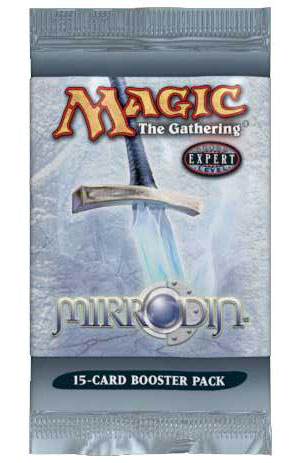
The Mirrodin pack is all about mana.
You number one job is get as many of these as possible.
You need a darn good reason to take any card over an artifact land, and you absolutely can’t say “oh, I can just get another artifact land later” or “it will table.” Myrs and Talismans are slightly less important, but still extremely important.
Yes, this means you will be taking artifact lands over cards like Shatter and Arrest. Get over it and do it. You want every artifact land in the draft.
Here is a list of cards you should consider taking over an artifact land:
That’s pretty much it. If you open a Molder Slug or a Glissa Sunseeker, take it and draft another archetype.
Otherwise you are looking to pick up some removal spells, maybe an affinity card or two, and maybe a few equipment.
Ideally you are going to go into the Darksteel pack with about four or five artifact lands, two or three Myr, a Viridian Longbow, and a Terror.
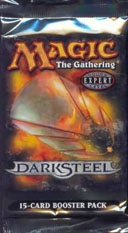
The Darksteel pack is all about Vedalken Engineer, Leonin Bola, Darksteel Citadel, removal, and Quicksilver Behemoth.
Vedalken Engineer follows the same rules as artifact lands. Take it over just about anything that’s not a bomb or absurd removal spell. Leonin Bola is also a very high priority as it’s one of the best pieces of “junk” you can get. Darksteel Citadel is definitely a bit worse than the colored artifact lands, but still a priority. Whether you are taking it before or after removal depends on how many artifact lands you got in the Mirrodin pack.
Otherwise, it’s time to pick up some removal spells. We skimped on removal in the first pack for artifact lands and mana, but that was for good reason. We now have a great artifact land manabase, and there’s a bevy of good removal options in the second pack:
Quicksilver Behemoth is very important, but you can usually get them later in the pack. The card is almost unplayable for most of the table, and you usually want two at the maximum.
Otherwise there are a lot of good filler options in Darksteel; the modular creatures are solid additions, and Darksteel Ingot is helpful but not superb. The only “affinity for basic land type” creature we would want is Spire Golem, but even then we aren’t going to have a ton of Islands in our deck.
At the end of the Darksteel pack, you should have a great manabase, a lot of mana acceleration, a few good equipment and removal spells, and very few ways to actually win a game.
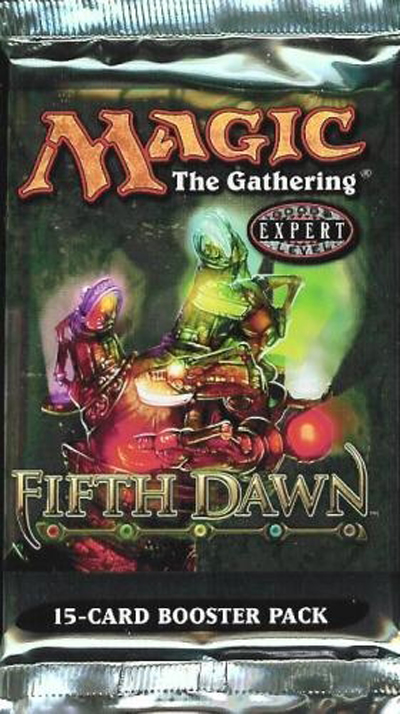
We are set up. Now comes the payoff.
The Fifth Dawn pack is fantastic for us. Even before we start looking at the sunburst cards there are a number of great payoff cards. Never pass Cranial Plating ever, and thank your blessings if you open one. Otherwise, Trinket Mage is one of the best commons for the deck, as a Borderland Ranger for an artifact land is perfect for us. The fact it can get things like Leonin Bola is just gravy. There’s also a bunch of other high quality cards like Tel-Jilad Justice, Night’s Whisper, Magma Jet, and Relic Barrier.
The premium sunburst cards should be taken pretty early, as other decks will want them as well, but you can wait on the Sawtooth Threshers and Lunar Avengers as they will make their way around the table pretty liberally. It is extremely important to properly value how badly you need threats at this stage of the draft and adjust your picks accordingly.
This is also where you are going to get some of the filler junk that will round out your deck. These cards are all just mediocre, but they’re fine in the context of your deck because artifacts are so important to your overall plan. They also have some reasonable synergies as well (Battered Golem + Viridan Longbow, Thermal Navigator and modular creatures).
Wrap It Up
Even though this is a fairly extensive primer on how to draft this deck, adaptability is key. If nothing else, forcing a deck like this is fantastic practice for being able to adapt fluidly as a draft progresses. You are going to need to deviate from the plans I’ve laid out at times, and figuring out what you need to prioritize is very challenging. Forcing a deck like this with such extreme pick orders is going to challenge your ability to evaluate how cards are going to interact with the cards you already have, and that’s a skill that is going to make you a better Limited player.
Perhaps the most important thing is understanding what each nonartifact spell is going to do to your deck. You really want to avoid playing cards like Thought Courier in a deck like this, because even if it is a solid card it is not helping us further our plan. It’s not so much that shouldn’t be playing them, but more that you should be drafting in a manner where you never actually end up with them. You are taking Horned Helm over Thought Courier pretty much every time, which means you should never really have a chance to even put Thought Courier in your deck.
Again, this is very important:
If you see a nonartifact card and it is not a premium removal spell, a castable bomb creature, or a card that helps you with your artifact synergies, you need to think long and hard about actually wanting it in your deck.
You’ve got a week to enjoy MD5 drafts on Magic Online, so go do it!
Oh, That Wasn’t Enough For You?
Okay, fine, I guess I can spend my night streaming MD5 drafts. You know, just to help you guys out, that’s all.
Tune in to my stream tonight (January 21st) where I’ll be drafting MD5 all night and forcing Mono-Blue Sunburst Affinity every time!
Follow along so you can see how it’s done and be properly prepared for a whole week of MD5 goodness! I will be announcing the exact start time via my Twitter this afternoon. See you guys tonight!


